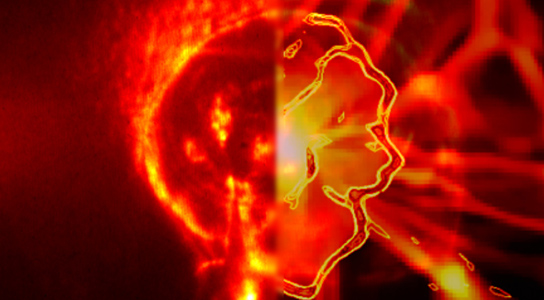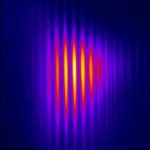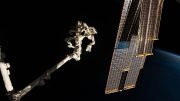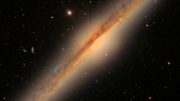
Scientists use powerful lasers to simulate supernova effects, uncovering insights into the early formation of magnetic fields in galaxies.
Scientists are using powerful lasers to mimic the effects of supernovae, which are helping to reveal how the magnetic fields of galaxies may have been formed in the early universe. All galaxies have magnetic fields, ones that might affect how fast stars are born, but it hasn’t been discovered where these magnetic fields come from.
The standard model explains that these fields form from tiny magnetic fields, which existed before galaxies appeared, serving as cosmic seeds that were amplified over billions of years by the turbulence in the intergalactic medium. It’s still unclear how these seeding magnetic fields initially arose.
 One explanation is that they were generated by the Biermann battery effect, based on how the hydrogen making up most of the gas in the Universe is made up of negatively charged electrons and positively charged protons. Outside pressures can push electrons easily around, since they are less massive, which could create an electric field. Eddies within the hydrogen can then set the electric charges spinning, thus generating magnetic fields.
One explanation is that they were generated by the Biermann battery effect, based on how the hydrogen making up most of the gas in the Universe is made up of negatively charged electrons and positively charged protons. Outside pressures can push electrons easily around, since they are less massive, which could create an electric field. Eddies within the hydrogen can then set the electric charges spinning, thus generating magnetic fields.
In order to confirm that seed magnetic fields could form this way, scientists experimented with high-power lasers at the Laboratoire pour l’Utilisation des Lasers Intenses (LULI) in Paris to try and recreate the extreme conditions of outer space. Green lasers blasted a carbon rod about 500 microns thick, just about five times thicker than a human hair, delivering more energy onto its surface in an instant that the whole Earth would receive from the sun in that same instant.
This mimics a blast just like a supernova, states lead author Gianluca Gregori, a physicist at the University of Oxford in England. The flexes of the carbon rod generate a shock wave within the low-pressure helium gas that surrounds it. The shock wave also produces eddies, that could create magnetic fields.
This scaled experiment reproduces the plasma conditions found in the early universe, but in a laboratory setting. They’ve calculated that it would take about 700 million years to amplify seed fields to galactic proportions, supporting the current theories of how galactic magnetic fields arise.









Be the first to comment on "Lasers Mimic Supernova to Explain Cosmic Magnetic Fields"